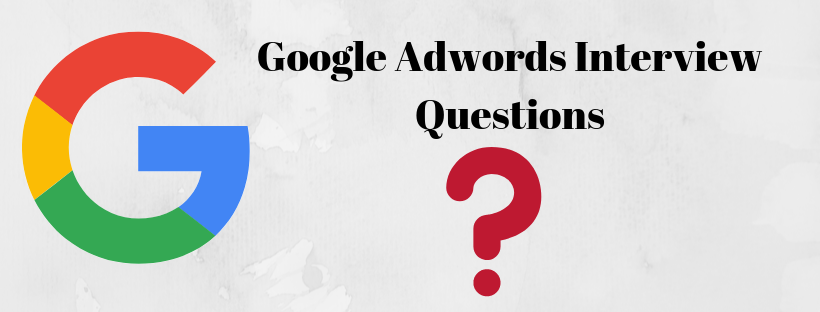The reasons to embrace a freelance career are compelling. From supplementing your income to set your hours, freelance work is increasingly moving from the fringes of the job marketplace and into the mainstream. If you’ve considered freelancing, you’re not alone. A recent study found that over one-third of workers (36%) are currently freelancing, an increase of 22% since 2019.
What is a Freelancer?
A freelancer is not an employee. A freelancer is someone who:
- Can choose who they want to work for when they work, and where they work with few exceptions.
- Set their payment rates.
- Freelancers usually charge hourly or daily rates for their work.
How to start your Journey?
- Do your homework: Start with some market research to make sure there’s a demand for whatever field you’re in and to understand the competition. This can help you determine how and where to market your services. Check out your competition to see what kinds of services they offer and how much they charge. You don’t want to overcharge potential clients, but you don’t want to undercharge and devalue your worth, either.
- Start building a reputation: Building up your brand and getting your voice out there allows you to be “known for your craft”. A few great mediums to make yourself known are a blog, YouTube channel, social media platforms like Iand podcast. The more you put out there, the more useful and relevant content and information you share with people online, the more you’re going to look like an expert in your particular craft or skill.
- Have a good process in place: Know your process, and know it well. A good process means that you have an organized system and way to work with your clients from the start, the middle, and the end. If your process is non-existent, it’s just a disorganized mess, the less likely your clients are going to want to continue working with you, and probably won’t recommend you to their friends.
- Serve the clients you already have: It can be tempting to want to always go after new clients, or to land the next great client. But when you’re too focused on new clients, you’re often forgetting about the client you are already serving. Focus on your existing clients and the ways you can improve your service to them.
- Upsell in an authentic way: Upselling can be tricky, and in some cases has a bad reputation. But here’s how you can do it for your freelance clients: a tier-based approach:
- One can do the basic work to meet the client’s stated need
- You meet the basic needs of the client, but also provide additional value
- You have a solution for the stated needs of the client, but then you also offer an additional service based on your review of the client’s situation and your experience.
- Increase your prices: Most freelancers undervalue or underprice themselves when they’re first starting. It’s an easy thing to do because you’re just doing everything you can to get your foot in the door. But it doesn’t have to be that way especially if you have your client. Focus on what you do and your value.
The different kinds of freelancing jobs:
Here are five basic kinds of freelancers that you will find in the global job market.
- Full-time freelancers: They are the ones who make all of their income from freelance and do not have any other full-time job.
- Contract freelancers: These freelancers work with companies or on projects for a stipulated period.
- Side hustle freelancers: These are the people who have full-time jobs and freelance on the side. Most content writing freelancers start this way, although, it is important to check your full-time job contract and see if you can freelance legally.
- Freelance business owners: They are the people who treat freelancing as a full-blown business.
What products/services you can sell?
Courses: As an experienced freelancer with expertise in your particular subject, you have the skills to teach other people. You can do this by creating courses and tutorials covering topics your target market is desperate to learn about. Courses can be small or large. They can cost anything from a couple of dollars, depending on the scope and the subject matter. People can access them via existing teaching platforms or through your website. There’s a lot of easy-to-use automated software which can handle and process payments and course delivery.
Content Writing: Content writing is preferred option among many freelancers. You can work from the comfort of your home or sitting on a beach or from your hotel room while on a vacation. You just need a laptop and a strong internet connection. If you are finding it difficult to pursue here are some tools to master content writing.
Paid Newsletter: You may already have a newsletter you send to your email list every week or month. A great way to create repeat revenue is by writing a premium newsletter people will be willing to pay for. The information contained within the premium version will be lengthier and more in-depth. You can share the strategies and tips you usually only share with your paying clients. For added differentiation and premium appeal, you can deliver the information as an actual printed newsletter. People still love reading words on paper and feeling the texture of natural materials in their hands.
Licensed Products: You can also sell licenses for products you create rather than granting exclusive access. A photographer selling stock photos or a programmer selling licenses to their plugins are some examples. Freelance designers, developers, illustrators, and other creatives have a lot of earning potential with licensed products.
Books: Books are usually the first item freelancers think of when deciding to create a product. Whether electronic or paperback, books are a highly popular and affordable way to discover new information and insights. A well-written book, in whatever format, can quickly establish you as a thought leader and expert in your field. Self-publishing platforms give you the potential to reach larger audiences when combined with intelligent marketing and branding.
Packaged Services: You can also turn your existing services into packages thereby making them more appealing to prospects. While not products per se, the packages offer a streamlined and potentially more lucrative version of the sometimes mismatched services you advertise. Packaged services make things easier for both the freelancer and the client. Both parties know exactly what they’re receiving and providing, as well as the exact costs. You can also include products you’ve created into the packages. This will allow you to raise the price of your combined services without doing any extra work.
Services and Products: As a freelancer, you can sell both services and products. One doesn’t negate the other. They often work best in tandem, supporting and completing one another.
Platforms where you can sell on:
- Upwork – Upwork is the world’s biggest freelance marketplace. It covers diverse areas such as web, mobile and software development, design & creative writing, sales, customer service, and much more.
- Fiverr –Fiverr freelancing is one of the top freelancer websites that connect freelancers and businesses digitally, under one roof. Fiverr is easy-to-navigate and is a good place to start for beginners.
- Freelancer – Freelancer is another well-established freelance marketplace that boasts a majestic client list that includes some high-profile business juggernauts like Microsoft, Boeing, and intel. The website has a user-friendly interface and is simple to use.
- LinkedIn – LinkedIn can be a powerful marketing tool for freelancers. People who use it are looking for connections that will pan out into a business opportunity, which makes it an ideal platform for finding new clients. LinkedIn helps your freelance work in many ways like you can chat with prospects, find contract gigs, build credibility with endorsements, and showcase work samples.
- Social media platforms – Instagram, Facebook, Twitter, YouTube, Pinterest. Social media isn’t just useful for creating connections and forming an online portfolio. Your social platform can also become a fountain of knowledge if you know how to market your skills right.
How much does a Freelancer earn?
There’s no definite answer to how freelancers get paid or how much one can make as a freelancer as their income always fluctuates, because it depends on their field of work, the amount of experience they have, and the skills they have developed.
Conclusion:
Freelance work has become a popular career choice for a lot of people these days. Instead of working regularly for one employer, freelancers are self-employed and offer their services to businesses, usually working with multiple clients at a time. There are pros and cons of freelance work. Freelance work provides more flexibility than singular jobs. Some freelance jobs allow you to work from home anywhere, whether it’s at home, in a coffee shop, or on the go. Freelancers can choose their projects.
Freelance work is inconsistent. But it is one of the topmost sources of earning money online. One can experience difficulty finding clients. Freelancers also don’t receive benefits from whom they work for. Freelancing can be an incredible way to earn a living on your terms, but there are trade-offs when it comes to financial health benefits. It’s up to you to decide if freelancing is right for you or not.




